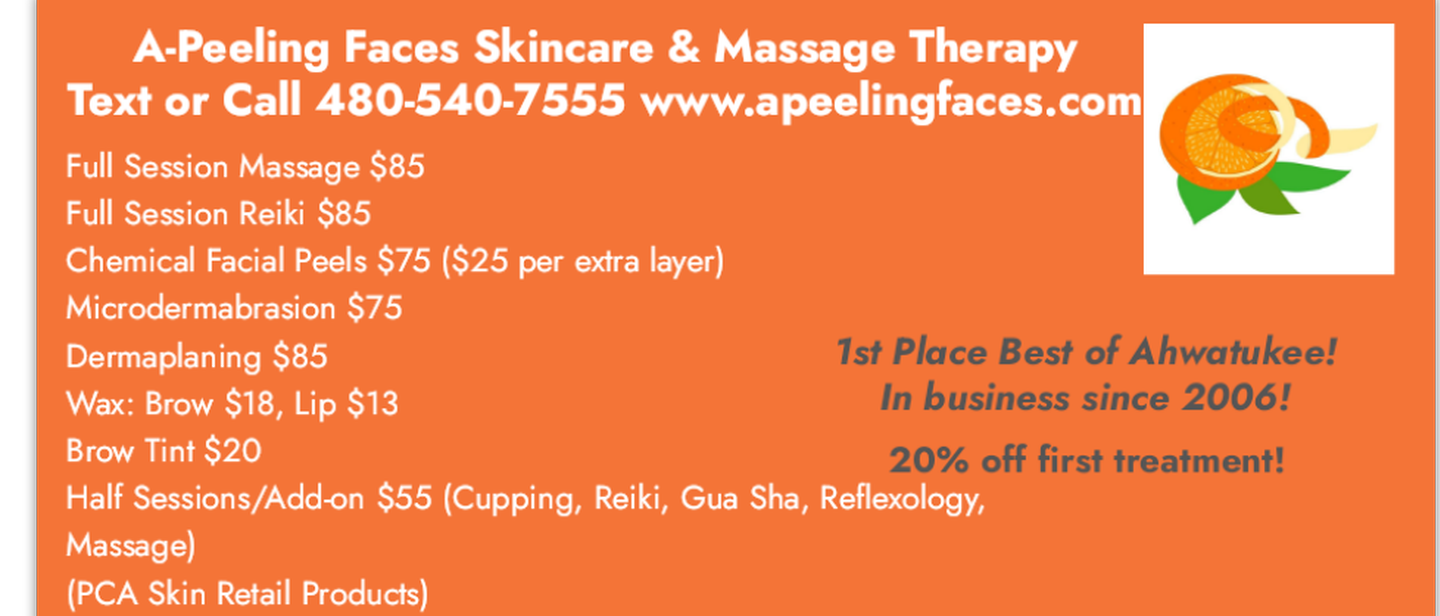Read about Cupping Therapy in The Ahwatukee Foothills News today page 34. Cupping is available at A-Peeling Faces Skin Care & Massage Therapy …
Cupping therapy for musculoskeletal issues and inflammation dates back to ancient times. The practice originated in Greece, Egypt, and China 3000 years ago. There are several different styles of cupping, including wet and dry techniques. Wet cupping, or the old traditional method, is rarely practiced in the states. Furthermore, wet cupping almost always requires a medical professional to administer it. Modern times prefer dry cupping, which can be a stand-alone treatment or, more commonly, as an add-on to massage therapy.
Cupping generally begins with oils on the body, then silicone, rubber, or plastic cups are placed and moved to various trouble spots. The suction from the cups is the catalyst for promoting healing. Cups are often put on trigger points for five or ten minutes to encourage blood flow. The therapist can glide the cups around the back, legs, or arms during the treatment. The intent is to release the fascia and take tension off the nerves by lifting the skin from the muscle or tissues. In doing so, some potential benefits include increased circulation, reduction of pain, the release of toxins and waste from the lymphatic system, and softening of stiff connective tissues. Depending on the areas of pain, there can typically be anywhere from one to five cups used per session.
Many therapists limit a cupping session to half an hour or shorter as a stand-alone treatment. However, if used with a massage, specific areas can receive attention from the cups while the rest of the muscle work is manual. It effectively treats a tough muscle knot by forcing blood into the area and allowing deeper penetration. Cupping should not hurt; however, you may experience localized twitching and tightness. Additionally, it is customary to expect circular bruising or red dots by the positioning of the cups.
Overall, cupping is a beneficial alternative therapy for healthy people to promote balance and wellness. The modality became popular by its utilization in sports medicine. Specific Olympic athletes are known to receive cupping therapy to prevent pain and injuries and mitigate spasms. However, therapists should personalize treatments for each individual’s areas of discomfort, considering their lifestyle. Be sure to request a consultation to ensure your therapist has adequate training in cupping.
Furthermore, cupping is contraindicated directly on arteries, veins, skin lesions, body orifices, eyes, or lymph nodes. More so, people with blood thinners, cancer, or organ failure should avoid cupping. If you are concerned about your medical conditions, you should check with your physician before receiving treatment.

